Top Ten Classic albums music lovers should have in their collection
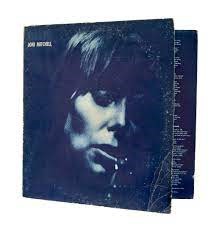
Top Ten Classic albums music lovers should have in their collection
The Dark Side of the Moon - Pink Floyd
The first of the top ten classic albums features iconic songs like "Money" and "Us and Them" and is known for its innovative use of studio effects and soundscapes.
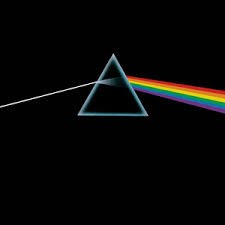
The Dark Side of the Moon by Pink Floyd ranks firmly among the Top Ten classic albums of all time. Released in 1973 and recorded at Abbey Road Studios, the band collaborated with producer Alan Parsons to craft a landmark in progressive rock. The album has sold over 45 million copies globally, a testament to its wide-reaching impact.
Throughout the record, Pink Floyd tackles weighty themes like time, death, and mental illness with striking clarity. “Speak to Me” opens with layered sounds that build suspense. Then “Money” targets materialism through a catchy bassline and jarring rhythms. Later, “Us and Them” offers a haunting meditation on the cost of conflict.
The band used tape loops, synthesizers, and found sounds to elevate their compositions. Clocks, laughter, and cash registers contribute to the album’s immersive atmosphere. These elements set a new standard for ambitious studio production.
Critics celebrated its sonic innovation, lyrical insight, and cohesive structure. Over the decades, its influence has reached far beyond rock music. Artists such as Radiohead, Nine Inch Nails, and David Bowie drew inspiration from its experimental spirit. Even Muse acknowledged its impact on their sound.
Furthermore, the album helped define the concept album format, where songs support a central narrative arc. Its inclusion in the U.S. Library of Congress's National Recording Registry in 2013 confirms its cultural significance.
Decades later, new generations continue to discover its brilliance. Its emotional weight and sonic complexity remain undiminished by time.
Among the Top Ten classic albums, The Dark Side of the Moon stands as an essential listen. With each play, it offers something new—proving that great art evolves with its audience.
Sgt. Pepper's Lonely Hearts Club Band - The Beatles
Widely regarded as one of the greatest, and easily one of the top ten classic albums of all time. This psychedelic masterpiece features tracks like "Lucy in the Sky with Diamonds" and "A Day in the Life."
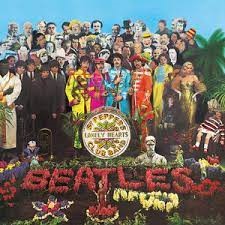
Top Ten classic albums rarely alter the musical landscape as dramatically as Sgt. Pepper’s Lonely Hearts Club Band did in 1967. At the height of their fame, The Beatles reinvented themselves and reshaped modern music through this bold, genre-defying work.
They introduced a fictional band as a creative framework, allowing them to unify the album’s diverse tracks. Rather than rely on formulaic songwriting, they blended rock with Indian sitars, mellotron, harmonium, and full orchestras. This approach helped define the psychedelic sound of the era.
“A Day in the Life” closed the album with avant-garde orchestration and a haunting final piano chord. In contrast, “Within You Without You,” written by George Harrison, explored Eastern philosophy using traditional Indian instrumentation.
Revolutionary production techniques enhanced every track. Backward tape loops, unconventional mic placements, and layered arrangements brought sonic richness unheard of in pop music before this release.
The album’s visual identity also made waves. Pop artist Peter Blake designed the striking cover, which featured a collage of cultural icons. It visually reflected the era’s social shifts—counterculture ideals, Eastern spiritualism, and political unrest.
Upon release, critics hailed it as groundbreaking. It reached number one in multiple countries and won four Grammy Awards, including Album of the Year. Yet its true legacy lies in how it changed the expectations of popular music.
Countless musicians—from David Bowie to Radiohead—cite its influence. It pushed the limits of studio creativity and brought the concept album into the mainstream.
As one of the Top Ten classic albums, Sgt. Pepper’s Lonely Hearts Club Band remains unmatched in vision and ambition. It didn’t just capture a moment in time—it expanded what music could express.
Kind of Blue - Miles Davis
This masterpiece is one of the best-selling and most influential jazz albums of all time, featuring a stellar line-up of musicians and some of Davis's most iconic compositions. It's cultural impact makes it one of the top ten classic albums.
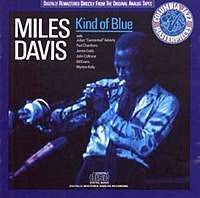
Kind of Blue by Miles Davis ranks high among the Top Ten classic albums in any genre, not just jazz. Released in 1959, the record brought together an extraordinary group of musicians: Davis, Coltrane, Adderley, Evans, Chambers, and Cobb.
The album redefined jazz through modal improvisation. Instead of following chord changes, the band played over modes, unlocking fresh musical freedom. Davis drew inspiration from George Russell’s Lydian Chromatic Concept, applying its ideas to shape every track.
“So What” opens the album with a bassline that grooves quietly beneath unforgettable solos from Davis, Coltrane, and Adderley. The interplay sounds effortless, yet masterful. “Freddie Freeloader” brings bluesy swing, while “All Blues” flows with warmth and introspection.
Each track highlights musical restraint and emotional honesty. The musicians elevate the compositions without overwhelming them. Bill Evans’ touch on the piano adds impressionistic flair. Coltrane’s tenor lines stretch and search, while Davis remains cool and direct.
Though rooted in jazz, the album reached beyond its genre. It cracked the Billboard Top 40 and became one of the best-selling jazz albums ever. Its influence continues to echo across musical styles and generations.
Davis achieved something rare: complexity and accessibility in perfect balance. Every note serves the song. No ego. No flash for its own sake. Just beautiful, timeless music.
Kind of Blue isn’t just one of the Top Ten classic albums—it’s a quiet revolution in sound. Listen once, and it’s striking. Listen again, and it deepens. That’s the mark of a true masterpiece.
Thriller - Michael Jackson
The best-selling album of all time and so naturally one of the Top Ten classic albums, Thriller features some of Jackson's most iconic hits, including "Billie Jean," "Beat It," and the title track.
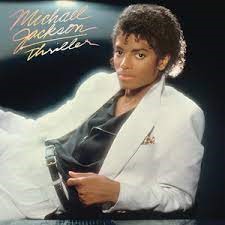
Michael Jackson’s Thriller stands as a cultural phenomenon and belongs firmly among the Top Ten classic albums of all time. Released in 1982, it revolutionized music videos, broke genre boundaries, and turned Jackson into a global icon. No pop album before or since has had a comparable impact.
The title track raised expectations for what music videos could achieve. Director John Landis crafted a short film packed with horror elements, choreography, and storytelling. Vincent Price’s chilling narration added theatrical flair, and the result redefined the format forever.
“Billie Jean” delivered equally groundbreaking influence. Its hypnotic bassline, tense lyrics, and stylish production created an instant classic. Jackson’s moonwalk debut during a live performance immortalized the track in pop history.
Rather than chase trends, Jackson led them. Thriller shaped 1980s pop culture—from music and fashion to dance and video. It shattered sales records and won eight Grammy Awards.
Jackson also broke racial barriers on television and radio. His presence on MTV opened doors for other Black artists, forever changing representation in mainstream media. Audiences worldwide connected with his message, sound, and visual identity.
The album’s success extended beyond commercial performance. Its influence on artists such as Beyoncé, The Weeknd, and Bruno Mars proves its lasting relevance. Producers and performers still study Thriller’s balance of rhythm, melody, and innovation.
Each track carries a distinct mood, yet they all contribute to a cohesive vision. Jackson’s vocals command attention, while Quincy Jones’s production delivers clarity and punch.
Among the Top Ten classic albums, Thriller remains essential. It set a new standard in artistry, ambition, and cultural impact. Michael Jackson didn’t just make a hit album—he created a timeless blueprint for global stardom.
Rumors - Fleetwood Mac
This iconic album features hits like "Go Your Own Way" and "Dreams" and is known for its honest portrayal of the relationships between the band members.
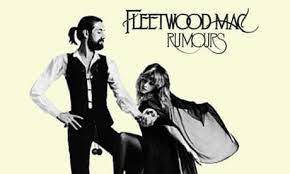
Fleetwood Mac’s Rumours earns its place among the Top Ten classic albums for both its emotional power and musical precision. Released in 1977, it delivered enduring hits like “Go Your Own Way,” “Dreams,” and “Don’t Stop,” each loaded with raw feeling and unforgettable hooks.
Personal turmoil fueled the album’s creation. Stevie Nicks and Lindsey Buckingham had just ended their relationship. Meanwhile, John and Christine McVie faced their own painful breakup. Instead of fracturing, the band funneled every emotion into their music with stunning honesty.
Ken Caillat and Richard Dashut guided production with precision and vision. The sound blends soft rock, pop, and folk, anchored by Fleetwood’s drumming and McVie’s keyboards. Layered harmonies and crisp arrangements add to its polished but emotional delivery.
The songs resonated deeply with audiences. Rumours dominated international charts and became one of the best-selling albums in history. Its themes—love, heartbreak, resilience—felt universal and timeless.
Culturally, the album made an imprint beyond sound. The monochrome cover featuring Nicks and Fleetwood in flowing costumes became instantly iconic. It echoed the band’s theatrical mystique and influenced visual aesthetics for years.
Even now, the album remains essential. Modern artists across genres sample its tracks or cite it as inspiration. From indie rock to hip-hop, its influence stretches far and wide.
New generations continue discovering its emotional depth and masterful songwriting. It still feels as personal and powerful as it did in 1977.
As one of the Top Ten classic albums, Rumours proves that vulnerability and musical excellence can coexist. It transformed heartbreak into art and continues to connect with listeners worldwide, decade after decade.
Exile on Main St. - The Rolling Stones
This gritty and bluesy double album is easily one of the Top Ten classic albums of all time and features some of The Stones' most iconic tracks, including "Tumbling Dice" and "Happy."

The Rolling Stones’ Exile on Main St. remains one of the Top Ten classic albums of all time.** Released in 1972, it captured the raw spirit of rock while blending blues, soul, gospel, and country into one bold, cohesive sound.
The album took shape during the band’s exile in France. Holed up in a villa rented by Keith Richards, they recorded in a humid, poorly lit basement that frequently flooded. Technical problems were constant, but the chaos inspired creativity. The band pushed past limits, trying new sounds and unconventional recording setups.
Exile on Main St. includes standout tracks like “Tumbling Dice,” “Happy,” and “Rocks Off.” Guest musicians—such as Dr. John, Bobby Keys, and Jim Price—added layers of horns, keys, and soul. The result was gritty, loose, and unforgettable.
The Stones didn’t aim for polish—they aimed for power. The album pulses with energy and urgency. It wasn’t just a collection of songs, but a statement: rock could be dirty, diverse, and deeply expressive.
Its cultural influence spread far beyond music. The band’s style—tight jeans, unkempt hair, leather—became the look of rock rebellion. The grainy, lo-fi feel of their videos echoed the album’s sound, shaping the visual style of 1970s rock.
Decades later, Exile on Main St. still inspires. Its sound influenced countless rock and alternative bands, and its rebellious tone helped define the genre. The album’s raw mix of passion, struggle, and grit ensures its place among the Top Ten classic albums ever recorded.
Purple Rain - Prince
This seminal album features Prince's signature blend of funk, rock, and soul and includes hits like "When Doves Cry" and the title track.
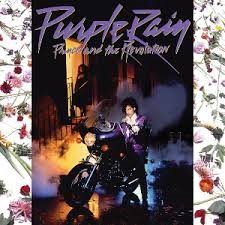
Prince’s Purple Rain stands as one of the top ten classic albums of all time. Released in 1984, it was a critical and commercial triumph that blended rock, funk, pop, and soul like nothing before it.
Prince recorded the album with his band, The Revolution. Most tracks were captured live in the studio, creating a raw, electric energy. Purple Rain also served as the soundtrack to the film of the same name, which Prince starred in and helped direct.
The album includes some of his biggest hits: “Let’s Go Crazy,” “When Doves Cry,” and the emotional title track “Purple Rain.” Each song showcases Prince’s unmatched ability to fuse styles, shred guitar solos, and deliver vulnerable, unforgettable lyrics.
Purple Rain ruled the Billboard 200 for 24 straight weeks and has sold over 25 million copies globally. More importantly, it changed music. Prince became a household name, inspiring artists across genres with his sound, performance, and vision.
The album’s influence extended beyond music. The video for “When Doves Cry” introduced a bold, cinematic aesthetic. His fashion—lace gloves, high heels, and purple trench coats—reshaped pop style and challenged norms.
On stage, Prince’s dance moves and guitar work pushed boundaries. His performances inspired countless musicians and dancers to elevate their own craft. Purple Rain wasn’t just music—it was a movement.
Decades later, the album still resonates. Its themes of love, struggle, and self-expression remain powerful. Its sound continues to influence modern pop, R&B, rock, and hip-hop.
Purple Rain is more than a soundtrack or a career peak. It’s a genre-defying masterpiece and one of the top ten classic albums ever made. Its legacy endures, reminding us that true artistry is fearless and timeless.
Blue - Joni Mitchell
This intimate and confessional album features Mitchell's iconic songwriting and includes hits like "California" and "River."

Joni Mitchell’s Blue stands as one of the top ten classic albums of all time. Released in 1971, it captured raw emotion and personal vulnerability in a way few albums ever had before.
Mitchell blended folk, pop, and jazz influences to create a sound that felt fresh and deeply intimate. The album reached number 3 in the UK and number 15 in the US, earning platinum certification in America.
Songs like “California” and “River” highlight Mitchell’s lyrical brilliance. “California” reflects on longing, identity, and the search for home. “River” captures heartbreak and regret with aching clarity.
Mitchell’s songwriting on Blue broke with the polished pop of the era. She wrote candidly about love, pain, and self-exploration. Her lyrics felt confessional, yet universal—pulling listeners into her emotional world without artifice.
She played with alternate guitar tunings and unusual chord progressions. This gave Blue a sound that was distinct and innovative. No one else was doing what Mitchell was doing musically or lyrically at the time.
James Taylor contributed guitar to tracks like “All I Want” and “California,” adding texture without overshadowing Mitchell’s voice. Their collaboration deepened the album’s warmth and expressiveness.
Blue helped define the singer-songwriter movement of the 1970s. Its emotional honesty influenced countless artists across genres and generations. Musicians continue to cite it as a defining artistic inspiration.
The album’s title track explores longing and existential reflection. Mitchell’s voice, fragile yet strong, conveys a vulnerability that feels timeless and genuine.
Decades later, Blue still resonates. Its themes—identity, heartbreak, freedom—remain deeply human and relevant in any era.
Blue deserves its place among the top ten classic albums for its impact, authenticity, and innovation. Joni Mitchell created a masterpiece that continues to speak to the soul..
Pet Sounds - The Beach Boys
This ground-breaking album features lush harmonies, intricate arrangements, and some of Brian Wilson's most innovative compositions, including "God Only Knows" and "Wouldn't It Be Nice"
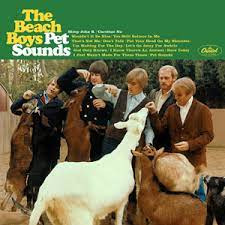
The Beach Boys’ Pet Sounds is one of the top ten classic albums and a landmark in rock history. Released in 1966, it redefined what a pop record could sound like—emotionally complex, sonically ambitious, and deeply personal.
Brian Wilson led the project, blending traditional rock instruments with unusual sounds like bicycle bells, theremins, and even barking dogs. The result felt visionary. Pet Sounds pushed boundaries while remaining accessible, striking a balance few albums have managed.
Though it didn’t match earlier commercial successes, the album later achieved platinum status and immense critical acclaim. It gradually earned its rightful place in music history.
Tracks like “God Only Knows” and “Wouldn’t It Be Nice” showcase Wilson’s lyrical depth and the band’s harmonies. “God Only Knows” expresses unconditional love in a way both spiritual and tender. “Wouldn’t It Be Nice” captures longing and idealism with unforgettable warmth.
Pet Sounds stood apart from its contemporaries. Where others aimed for chart-topping singles, Wilson aimed for emotional truth and sonic beauty. He built lush, layered arrangements filled with orchestral swells and unconventional textures.
The album influenced generations of artists—from Paul McCartney and Radiohead to indie bands and bedroom producers. Everyone heard something new in its bold ideas.
Wilson’s songwriting on Pet Sounds reveals vulnerability, hope, and heartbreak. He tapped into a kind of emotional honesty that wasn’t common in mid-’60s pop.
Even today, Pet Sounds remains fresh. Its messages of love, confusion, and innocence continue to resonate with listeners everywhere.
As one of the top ten classic albums, Pet Sounds stands as a testament to artistic risk and emotional depth. The Beach Boys created something timeless.
What's Going On - Marvin Gaye
This socially conscious album features hits like "What's Going On" and "Mercy Mercy Me" and is regarded as one of the greatest soul albums of all time.
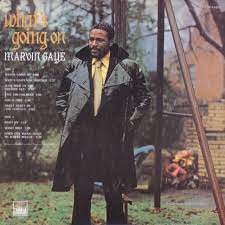
Released in 1971, What’s Going On is a landmark soul album and one of the top ten classic albums. Marvin Gaye boldly redefined Motown by blending heartfelt melodies with urgent social themes like war, poverty, and injustice.
The album responded directly to the political and cultural unrest gripping America in the early 1970s. Gaye crafted a soulful protest record that still felt warm, romantic, and deeply human. The result changed what soul music could say.
What’s Going On reached the Billboard top five and produced three major hit singles. The album sold widely and reached global audiences.
The title track, “What’s Going On,” blends jazz, gospel, and soul to question violence, conflict, and indifference. It remains Gaye’s defining work. “Mercy Mercy Me (The Ecology)” mourns pollution and environmental destruction, decades before such topics reached the mainstream.
Both tracks show Gaye’s lyrical insight and sonic imagination. His voice, layered over lush arrangements, brings urgency and beauty to every phrase.
Gaye produced the album himself, breaking from Motown’s formula. He used bongos, strings, and vocal overdubs to build rich, textured soundscapes.
The album tackled real issues. It didn’t hide behind love songs or radio hits. Instead, Gaye asked hard questions and sang from the heart.
What’s Going On inspired generations of artists—from soul singers to hip-hop producers—to explore deeper themes in their music. It set a new bar.
The album remains essential listening. Its message still resonates today, especially in times of division, protest, and calls for justice.
As one of the top ten classic albums, What’s Going On is a timeless fusion of soul, activism, and personal vision.
Recent Posts
Queen studio albums: A Review
Phil Collins Albums Ranked & Reviewed – Complete Guide to Every Studio Album
The best of Massive Attack
Let’s Make Magic
Book Your Event DJ Now




